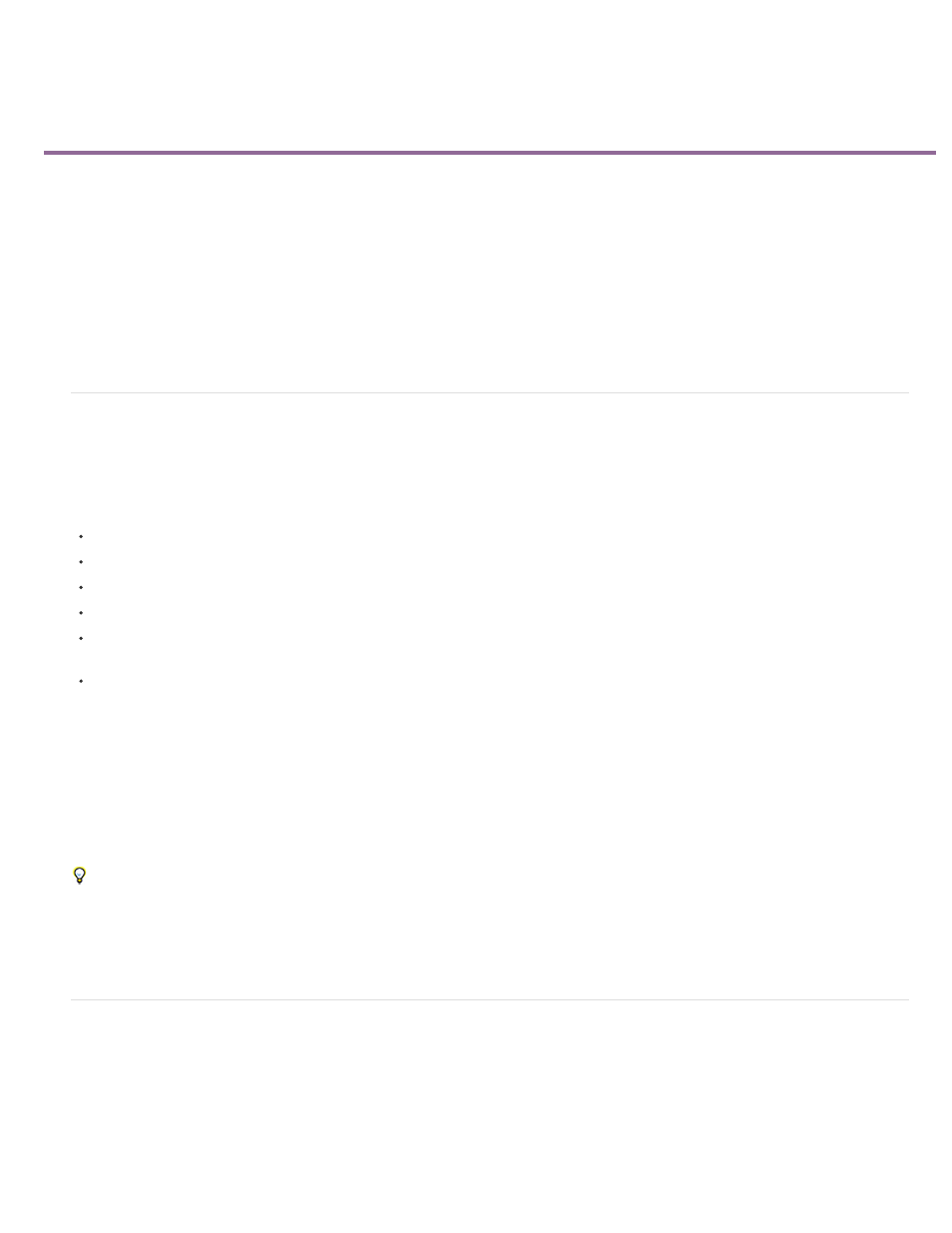Working with timecode – Adobe Premiere Pro CC v.7.xx User Manual
Page 144

Working with timecode
About timecode
Choose timecode display format
Change how timecode is displayed
Stripe tape or replace timecode
Capturing timecode
Set timecode manually for a clip
Enter timecode
View timecode as a burn-in
View source timecode in the Program Monitor
View timecode in the Timecode panel
About timecode
Many camcorders and high-end video decks record timecode, which marks specific frames with unique addresses. Timecode is important
whenever you want to capture exactly the same frames that were identified or captured previously, as in the following tasks:
You want to log clips before you capture them.
You plan to capture clips using batch (automated) capture.
You want to recapture clips because the original files became corrupted or were deleted.
You plan to export sequences to another system by using EDL.
You’re using a system in which you edit quickly with low-resolution captures, and later recapture the clips at full resolution and quality for the
final version.
You plan to synchronize captured video with audio recorded separately.
Unlike the numbers on time counters found in home VCRs, timecode is recorded onto videotape as part of the video signal. If footage lacks
timecode, you can add it by copying it with a camera or deck that writes timecode. You can then log or capture the video from that device.
For best results, timecode should run continuously from the beginning to the end of the tape; it shouldn’t restart from zero anywhere in the middle.
In editing, if you log a capture In point such as 00:00:01:09 but that number occurs on the tape two or three times because of timecode restarts,
Premiere Pro can’t be certain which 00:00:01:09 is the place to start its capture. It can easily capture the wrong clips from tapes with discontinuous
timecode.
To ensure unbroken timecode, you need to either shoot it continuously or stripe your tape with it before shooting.
To ensure that you always shoot continuous timecode, record at least 5 seconds of extra video past the end of the action in any shot. If you
review a clip in the camera, be sure to rewind the tape back into that 5-second margin before recording again. Your camcorder reads the
timecode from the frame on which you stop and begins recording timecode with the very next frame number when you start your next shot. Be
careful; if you leave a gap between the last frame of the previous shot and the first frame of the next, the camcorder begins writing timecode at
00:00:00:00 again.
Choose timecode display format
By default, Premiere Pro displays the timecode for any clip that was originally written to the source medium. If a frame has timecode 00:00:10:00
on tape, the timecode displayed for it after it has been captured is 00:00:10:00. Source timecode often makes logging clips easy. Source timecode
is shown for a clip regardless of the timebase of the sequences in which it is used. When the timebase of the clip differs from the timebase of the
sequence, source timecode can make logging footage easier. For example, a clip shot in 24p has a timebase of 30 fps and 30 fps timecode.
Premiere Pro shows the original 30 fps timecode for that clip, even though it is used in a sequence with a timebase of 23.976. However, you can
change this default to instead show the timecode for every clip starting at 00:00:00:00.
147